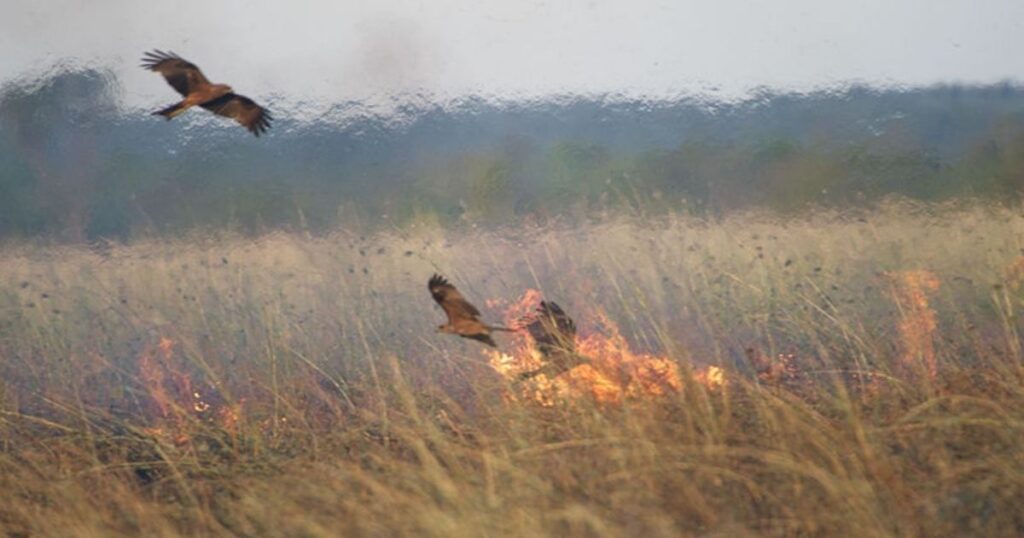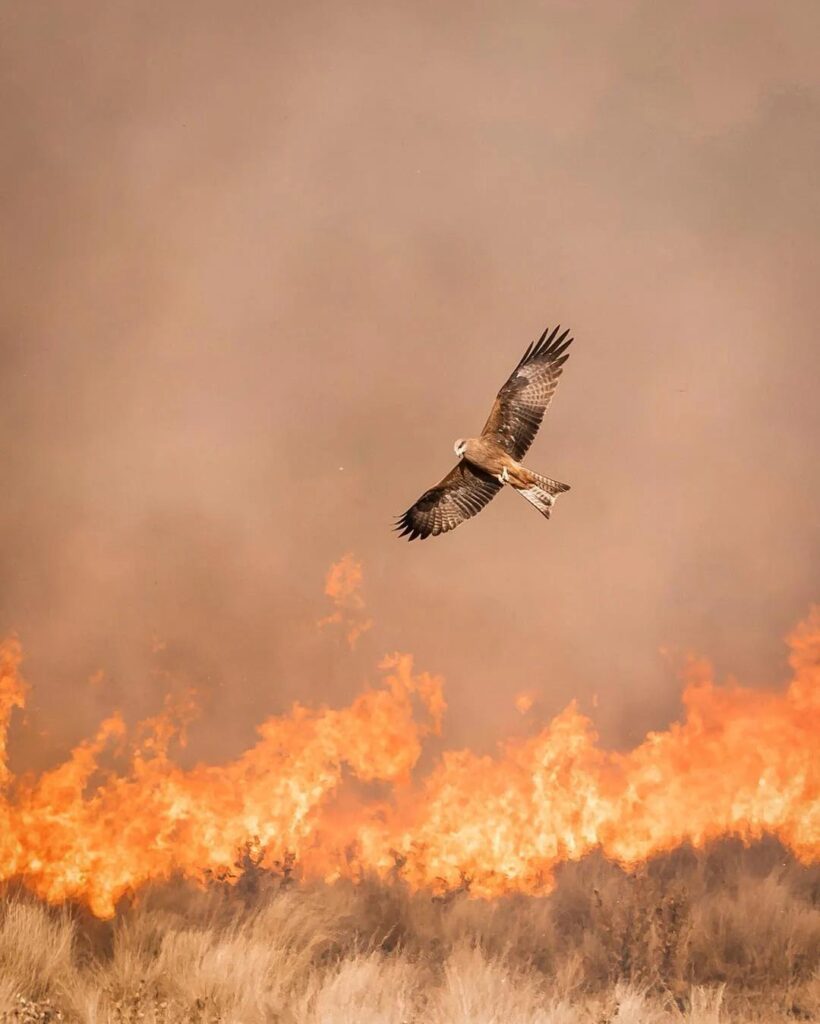
Fire with Wings: How “Fire Hawks” in Australia Use Fire to Hunt
There’s something almost otherworldly about the Australian outback when it burns. The air goes thick and amber, the sky bruises with smoke, and every breath tastes faintly of dust and char.
In the Northern Territory, fires aren’t strangers — they’re regular guests that sweep through grasslands, clearing the way for new growth.
But sometimes, the fire doesn’t just arrive. Sometimes, it’s carried.
Local Indigenous communities have long spoken of birds (black kites, whistling kites, and brown falcons) that don’t simply chase the flames. They help spread them.
They’re called fire hawks, and their hunting strategy reads like something out of mythology: they pick up burning sticks and drop them into unburned grass to start new fires, flushing prey from cover.
Over the past decade, scientists have started confirming what Aboriginal Australians have always known: some birds of prey actively use fire as a hunting tool.
Science Catches Up to the Smoke
When Western researchers first heard about birds spreading fire, they were skeptical. The idea felt almost too cinematic. But field observations changed that.
In 2017, an interdisciplinary team led by Mark Bonta and Robert Gosford documented multiple accounts of birds deliberately carrying burning sticks. Firefighters in the Northern Territory had seen it, too — kites swooping down, grabbing smoldering twigs, and flying off to ignite new patches of grass.
The birds weren’t being reckless; they were strategic. As soon as flames touched fresh vegetation, insects, frogs, and small mammals bolted from their hiding spots. For the hawks, it was like sounding an alarm that said, “Dinner’s ready.”
There’s a phrase ecologists sometimes use: “opportunistic intelligence.” It describes species that exploit chaos, turning unpredictability into advantage. Fire hawks embody that perfectly. They’re not lighting fires out of curiosity or malice. They’re using fire purposefully in the same way humans use a tool.
Still, scientists tread carefully when describing this behavior. Using fire intentionally implies a level of cognition that challenges traditional definitions of animal intelligence. Is it instinct? Learned behavior? Cultural transmission among bird populations?
Maybe a little of each.
A Story Older Than Science
Long before any paper was published or a researcher set up camp in the outback, Indigenous Australians already knew these birds by name, behavior, and spirit.
For many Aboriginal groups, the fire hawks have long been woven into story, ceremony, and ecological practice. Their knowledge stretches back countless generations, embedded in what’s known as cultural fire.
In these traditions, fire isn’t the enemy. It’s medicine. It’s maintenance.
Controlled burns, guided by deep environmental knowledge, help manage land health and promote regrowth, protecting sacred sites and creating habitats for native species. The fire hawks, in this worldview, aren’t troublemakers; they’re partners in the ecological rhythm.

When the Sky Burns Back
Fire hawks aren’t unique to one region. Reports of similar behavior have surfaced in parts of Africa and Asia, though none as thoroughly documented as those in northern Australia.
It suggests something bigger at play. Maybe, under certain environmental pressures, similar instincts evolve independently — a concept called convergent evolution. Nature reuses its best ideas, tweaking them for local conditions.
That thought alone reshapes how we view intelligence. It’s not linear. It’s contextual. A bird doesn’t need a neocortex to reason; it just needs a problem, a pattern, and time.
The Australian landscape, with its regular burn cycles, may have been the perfect classroom for this behavior to evolve. Fire isn’t an anomaly there — it’s a season, as natural as rain. The fire hawks simply learned to read that season better than anyone else.
What We Can Learn from Fire Hawks
It’s tempting to romanticize them — to imagine the fire hawk as a symbol of wild rebellion or elemental mastery. And yes, part of the allure is emotional. But the lesson isn’t just poetic; it’s ecological.
These birds remind us that intelligence in nature isn’t rare or exotic. It’s everywhere, taking forms we often overlook.
They remind us that knowledge — whether human or animal, ancient or modern — thrives on observation, patience, and respect for cycles.
And maybe, in a strange way, they mirror us. Humanity, too, learned to control fire, to bend it toward survival and art and destruction. The fire hawks simply echo that instinct.


